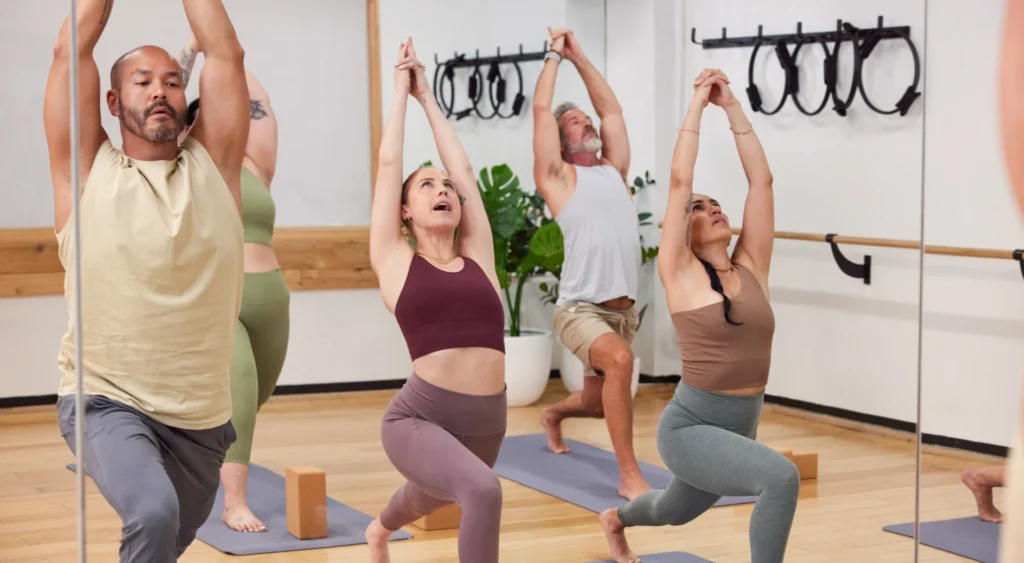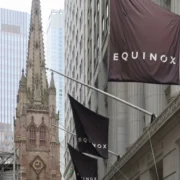Corporate Wellness Isn’t Dead, You’re Just (Probably) Doing It Wrong

A workplace well-being expert shares advice for companies looking to design a winning corporate wellness program
Corporate wellness – the practice of giving employees access to discounted or free fitness, wellness and healthcare services as part of their benefits package – has exploded in recent years, and for good reason.
The corporate wellness market is projected to grow to nearly $105 billion by 2030 as blue-chip companies continue to invest in their employees.
While there’s some debate over just how effective corporate wellness programs actually are, studies and surveys have consistently shown that having healthier employees can help businesses save money on healthcare, boost workplace productivity and reduce costs associated with absenteeism.
Having a robust corporate wellness offering might also help firms recruit and retain top talent, especially among younger generations. A 2023 survey from healthy eating platform Lifesum found that nearly 71% of Gen Z and Millennials would quit their job in favor of one that better supports their overall well-being.
“Post-COVID, (people are) looking for organizations that have some kind of commitment to their well-being,” says Dilan Gomih, the founder of Dilagence, a firm that advises companies on how to design effective workplace wellness programs. “If you want to be able to attract and retain talent, then it’s absolutely in your interest to make sure you’re investing in wellness.”

But for businesses to see an economic return on their wellness investments, employees must actually use the services on offer.
Gomih, whose firm has worked with brands including Google, Pinterest and J.P. Morgan, sat down with Athletech News to share her biggest tips for companies looking to craft a winning corporate wellness program.
Drive Awareness & Make It Easy
To start, awareness is key. Too many employees either don’t know they have access to corporate wellness benefits or don’t know where to find them, according to Gomih. Predictably, this leads to low usage rates.
“Awareness is huge,” Gomih says. “You have to make it incredibly easy for people to find it – in a minute or two. Otherwise, they’re not going to take advantage.”
Companies should take strides to make sure their employees understand the depth and breadth of the services available to them. Wellhub, a popular corporate wellness platform used by more than 15,000 companies in 11 countries, gives employees preferential access to gyms, wellness coaching, mental health services and more, for example.
“Make sure people know that yes, you can use it on a massage if you want, or you can use it on your Peloton subscription – there’s a full gamut of things you can spend it on,” Gomih says. “Choice is good. You just have to make sure people know what their choices are.”

Convenience Is Key
Driving awareness is only part of the battle, though. To encourage long-term usage, companies must ensure their corporate wellness offerings are convenient for busy workers.
Gomih gives the example of offering yoga classes at lunchtime, a stereotypical corporate wellness benefit. Lunchtime yoga sounds good in theory, but taking an hour-long break in the middle of the day isn’t feasible for most white-collar workers.
“Imagine working at an investment bank like I did,” she says, recalling her previous career at Bank of America. “I’m going to be like, ‘That’s really nice. (But) I can’t leave my desk.’”
Instead, Gomih recommends companies offer programs that reimburse employees who attend a fitness class or get a massage on their own time. Reimbursement programs are more flexible, leading to higher usage. They also give HR leaders valuable data on which wellness benefits are most popular with workers – where people choose to spend their money is where they see the most value.

Fitness brands looking to capture a bigger swath of the corporate wellness crowd should consider offering shorter workout classes or small pieces of online fitness content, Gomih recommends. This way, brands can appeal to time-crunched employees, many of whom don’t have time for a full hour-long class during the workweek but can find the time to squeeze in 10 or 20 minutes of physical activity.
“Where Peloton has been winning is having these 20 or 10-minute (classes),” she says. “People feel like, ‘Okay, I’ve got a few minutes. I can do this.’”
It Starts at the Top
For all the good that corporate wellness can do, there’s still a stigma around employees taking time out of their day to focus on health and wellness. This is especially true in more traditional industries like finance, law and, ironically, healthcare.
This societal barrier prevents many companies from fully embracing corporate wellness – and reaping the productivity and cost-saving benefits that come with it.
“Where there’s still a mental shift to be made is connecting the dots between well-being being as a nice-to-have versus a need-to-have,” Gomih says. “It’s realizing, ‘If your employees are healthier, they’re more productive for you.’”
Ideally, CEOs and top-level executives should embrace wellness and set the tone for the entire organization.
Gomih cites Thrive Market – a Dilagence client – as a good example of a brand that’s embraced a top-down commitment to workplace wellness. When Dilagence worked with Thrive, the company’s executive team built movement into their daily work lives, including taking regular team walks to relieve stress and stir creativity.
“When they were working on a strategic problem or they had a consideration they were thinking through as an organization, they literally took the advice of going on a 20-minute walk to think about it,” she recalls. “All the research says that when you move, you’re helping your mind think better.”
At the end of the day, Gomih believes white-collar workers should approach physical health in the same way athletes increasingly prioritize taking care of their mental health for peak performance.
“Physical and mental health aren’t mutually exclusive, and that’s still something we’re fighting,” she says.
Correction: Dilagence has worked with brands including Pinterest, not Peloton, as a previous version of this article stated.



